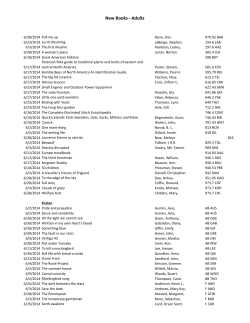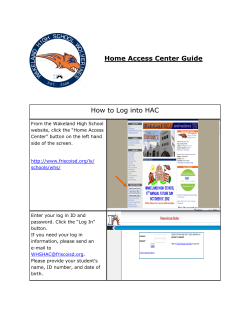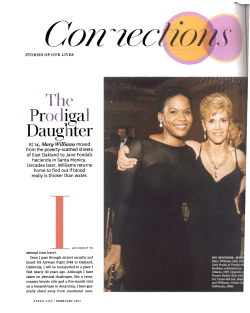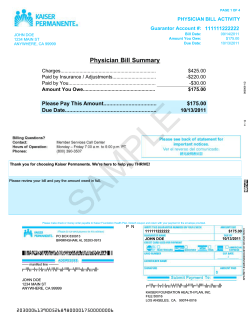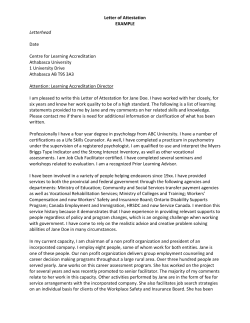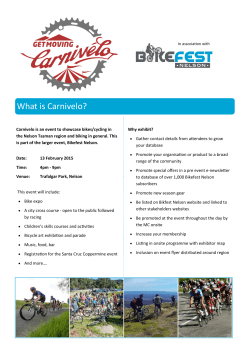
Jane Eyre Multiple Critical Perspectives Multiple Critical Perspectives
Multiple Critical Perspectives Teaching Charlotte Brontë's Jane Eyre from Multiple Critical Perspectives by Douglas Grudzina ™ ™ Multiple Critical Perspectives Jane Eyre General Introduction to the Work Jane Eyre: An Autobiography O riginally titled Jane Eyre: An Autobiography, Currer Bell was listed as the editor, not the author. Eventually, Brontë revealed herself as the author, and subsequent printings of the novel were released under her name. Brontë included many events in the novel that paralleled her own life. For example, Brontë modeled Lowood Institution after her own boarding school, Cowan Bridge, where she and her sisters endured squalid living conditions. Jane’s friend Helen Burns dies of tuberculosis, and Brontë’s two sisters died of tuberculosis, which they had contracted at Cowan Bridge. Brontë modeled the harsh character of Mr. Brocklehurst after Reverend Carus Wilson at Cowan Bridge. John Reed’s substance abuse clearly resembles Branwell’s struggle with opium and alcohol addiction. Charlotte’s brother ironically died a death very similar to John’s barely a year after the novel’s publication. Brontë taught at a girls’ boarding school—Roe Head—and then became a governess for the Sidgewick family, paralleling Jane’s teaching position at Lowood and her governess position at Thornfield. Brontë disliked her governess positions and dreamed of establishing her own school; she lives this dream by having Jane operate the village school for girls, which is set up by St. John Rivers. In contrast, the strongest difference between Brontë’s life and Jane’s life in the novel is regarding true love, passion, and marriage. At the end of the novel, Brontë reunites Jane and Rochester. The two marry, have a child, and are truly in love with one another. By the time she wrote Jane Eyre, Charlotte had not yet found her love. Ironically, when she finally did marry, some eight years later, she died within a year of her marriage and pregnant with her first child. 6 P r e s t w i c k H o u s e , I n c . Jane Eyre Multiple Critical Perspectives Feminist Theory Applied to Jane Eyre Notes on the Feminist Theory F eminism is an evolving philosophy, and its application in literature is a relatively new area of study. The basis of the movement, both in literature and society, is that the Western world is fundamentally patriarchal (i.e., created by men, ruled by men, viewed through the eyes of men, and judged by men). The feminist movement in society found its approach to literature in the 1960s. Of course, women had already been writing and publishing for centuries, but the 1960s saw the rise of a feminist literary theory. Until then, the works of female writers (or works about females) were examined by the same standards as those by male writers (and about men). Women were thought to be unintelligent (at least in part because they were generally less formally educated than men), and many women accepted that judgment. It was not until the feminist movement was well under way that women began examining old texts, reevaluating their portrayal of women and writing new works to fit the developing concept of the “modern woman.” The feminist approach is based on finding suggestions of misogyny (negative attitudes toward women) within pieces of literature and exposing them. Feminists are interested in exposing the undervaluing of women in literature that has been accepted as the norm by both men and women. Feminist critics have even dissected many words in Western languages that they believe to be rooted in masculinity. Feminists argue that since the past millennia in the West have been dominated by men—whether they be the politicians in power or the historians recording it all—Western literature reflects a masculine bias, and consequently, represents an inaccurate and potentially harmful image of women. In order to fix this image and create a balanced canon, works by females and works about females need to be added and read from a feminist perspective. P r e s t w i c k H o u s e , I n c . 21 Jane Eyre Multiple Critical Perspectives Activity One Examining the Nature of Marriage as Portrayed in the Novel 1.Copy and distribute Jane Eyre: Feminist Theory Fact Sheet. NOTE: Advise students not to lose these sheets as they will be referring to them for all of the Feminist Theory activities. 2.Divide the class into an even number of groups. Assign half the groups (or let them choose) Rochester and the other half St. John Rivers. 3.Have the Rochester groups reread those passages pertinent to Rochester’s and Jane’s marriage and then answer the following questions: 4.Have the St. John Rivers group reread those passages pertinent to Rivers’s proposed marriage to Jane and then answer the following questions: Rochester • Chapter 3: p. 29: “On that same occasion I learned...” • Chapter 24: pp. 249 – 252, especially p. 252: “I never met your likeness, Jane...” to “Ask me something now, Janet.” • Chapter 24: p. 259: “I remembered what in the hurry of events...I had wholly forgotten” to “...I could better endure to be kept by him now.” • Chapter 27: pp. 288 – 193: “Well, Jane: not a word of reproach?” to “...to say otherwise is sophistical is false.” • Chapter 27: pp. 302 – 303: “You see how the case stands...” to “I advise you to live sinless; and I wish you to die tranquil.” • Chapter 38 P r e s t w i c k H o u s e , I n c . 25 Jane Eyre Multiple Critical Perspectives Psychoanalytic/Freudian Criticism Applied to Jane Eyre Notes on the Psychoanalytic Theory T he terms “psychological” or “psychoanalytical” or “Freudian Theory” seem to encompass essentially two almost contradicto- ry critical theories. The first focuses on the text itself, with no regard to outside influences; the second focuses on the author of the text. According to the first view, reading and interpretation are lim- ited to the work itself. One will understand the work by examining conflicts, characters, dream sequences, and symbols. In this way, the psychoanalytic theory of literature is very similar to the Formalist approach to literature. One will further understand that a character’s outward behavior might conflict with inner desires, or might reflect as-yet-undiscovered inner desires. Main areas of study/points of criticism of the first view: • There are strong Oedipal connotations in this theory: the son’s desire for his mother, the father’s envy of the son and rivalry for the mother’s attention, the daughter’s desire for her father, the mother’s envy of the daughter and rivalry for the father’s attention. Of course, these all operate on a subconscious level to avoid breaking a serious social more. • There is an emphasis on the meaning of dreams. This is because psychoanalytic theory asserts that it is in dreams that a person’s subconscious desires are revealed. What a person cannot express or do because of social rules will be expressed and accomplished in dreams, where there are no social rules. Most of the time, people are not even aware what it is they secretly desire until their subconscious goes unchecked in sleep. P r e s t w i c k H o u s e , I n c . 35 Multiple Critical Perspectives Jane Eyre Activity One Examining Bertha as Id, Jane as Superego, and Rochester as Ego 1. Copy and distribute Psychoanalytic/Freudian Activity One Graphic Organizer. Review with students the characteristics of the three aspects of personality according to Freud. 2.Divide the class into three groups or a number of groups divisible by three. Assign each group (or allow groups to choose—as long as each character is covered) to focus on either Bertha, Rochester, or Jane. 3.Have the Bertha groups reread, discuss, and take notes on, focusing especially on how the character’s actions provide evidence for her representing the Id: • Beginning on page 272: “All the preface sir; the tale is yet to come,” and ending on page 273: “the transaction actually took place.” • Beginning on page 282: “You know this place, Mason,” said our guide., and ending on page 283: “Off with you now. I must shut up my prize.” • Beginning on page 293: “I am a fool!” to page 299: “You think me an unfeeling, loose-principled rake: don’t you? ” 4.Have the Rochester groups reread, discuss, and take notes on, focusing especially on how the character’s actions provide evidence for his representing the Ego: • Beginning on page 210: “Will Grace Poole still live here, sir?” to the end of the chapter. • Beginning on page 282: “You know this place, Mason,” said our guide., and ending on page 283: “Off with you now. I must shut up my prize.” • Beginning on page 293: “I am a fool!” to page 299: “You think me an unfeeling, loose-principled rake: don’t you? ” 5.Have the Jane groups reread, discuss, and take notes on, focusing especially on how the character’s actions provide evidence for her representing the Superego: 40 P r e s t w i c k H o u s e , I n c . Jane Eyre Multiple Critical Perspectives Marxist Theory Applied to Jane Eyre Notes on the Marxist Approach T he Marxist approach to literature is based on the philosophy of Karl Marx, a German philosopher and economist. His major argument was that whoever controlled the means of production in society controlled the society—whoever owned the factories “owned” the culture. This idea is called “dialectical materialism,” and Marx felt that the history of the world was leading toward a communist society. From his point of view, the means of production (i.e., the basis of power in society) would be placed in the hands of the masses, who actually operated the means of production, not in the hands of those few who owned it. It was a perverted version of this philosophy that was at the heart of the Soviet Union. Marxism was also the rallying cry of the poor and oppressed all over the world. To read a work from a Marxist perspective, one must under- stand that Marxism asserts that literature is a reflection of culture, and that culture can be affected by literature (Marxists believed literature could instigate revolution). Marxism is linked to Freudian theory by its concentration on the subconscious—Freud dealt with the individual subconscious, while Marx dealt with the political subconscious. Marx believed that oppression exists in the political subconscious of a society—social pecking orders are inherent to any group of people. Four main areas of study: P • economic power • materialism versus spirituality • class conflict • art, literature, and ideologies r e s t w i c k H o u s e , I n c . 49 Jane Eyre Multiple Critical Perspectives Activity One Examining Class and Gender Differences as Portrayed in the Novel 1.Copy and distribute Jane Eyre Marxist Theory Fact Sheet. (NOTE: Advise students not to lose their copy, as they will need to refer to it in the other activities.) 2.Review with the class facts about what we know of Jane’s personal history, her parents, the story of her birth, etc. (Note, include what we learn of Jane’s father’s family from St. John Rivers.) 3.Have students—individually, in pairs, or in small groups—reread the following passages and discuss the questions the follow: • Chapter 14: pp. 132 – 140: “Is Miss Eyre there?” to “...were it once free, it would soar cloud-high.” • Chapter 17: pp. 173 – 174: “Why, I suppose you have a governess for her,” to “My lily-flower, you are right now, as always.” • Chapter 17: pp. 176 – 177: “‘How do you do?’ he asked,” to the end of the chapter. • Chapter 23: pp. 244 – 245: “Jane, be still; don’t struggle so...” to “Jane, will you marry me?” • Chapter 24: p. 259: “I remembered what in the hurry of events...I had wholly forgotten” to “...I could better endure to be kept by him now.” • What is the nature of Jane and Rochester’s first lengthy conversation? • What does he suggest by being surprised to hear Jane call herself a “subordinate”? • What is the basis of the scorn Rochester’s guests heap on Jane and governesses in general? • What does Rochester offer, along with himself, in his marriage proposal to Jane? • What does Rochester mean when he calls Jane his “equal”? • How does Jane initially respond to Rochester’s proposal and his attempts to embrace her? • Why does Jane write to her uncle, John Eyre, to inform him of the wedding? • What, then, to Jane is the basis of her “equality” with Rochester? 4. Reconvene the class and review students’ answers to the above questions. P r e s t w i c k H o u s e , I n c . 53
© Copyright 2025


